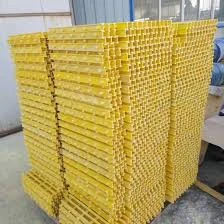
-
 Afrikaans
Afrikaans -
 Albanian
Albanian -
 Amharic
Amharic -
 Arabic
Arabic -
 Armenian
Armenian -
 Azerbaijani
Azerbaijani -
 Basque
Basque -
 Belarusian
Belarusian -
 Bengali
Bengali -
 Bosnian
Bosnian -
 Bulgarian
Bulgarian -
 Catalan
Catalan -
 Cebuano
Cebuano -
 China
China -
 China (Taiwan)
China (Taiwan) -
 Corsican
Corsican -
 Croatian
Croatian -
 Czech
Czech -
 Danish
Danish -
 Dutch
Dutch -
 English
English -
 Esperanto
Esperanto -
 Estonian
Estonian -
 Finnish
Finnish -
 French
French -
 Frisian
Frisian -
 Galician
Galician -
 Georgian
Georgian -
 German
German -
 Greek
Greek -
 Gujarati
Gujarati -
 Haitian Creole
Haitian Creole -
 hausa
hausa -
 hawaiian
hawaiian -
 Hebrew
Hebrew -
 Hindi
Hindi -
 Miao
Miao -
 Hungarian
Hungarian -
 Icelandic
Icelandic -
 igbo
igbo -
 Indonesian
Indonesian -
 irish
irish -
 Italian
Italian -
 Japanese
Japanese -
 Javanese
Javanese -
 Kannada
Kannada -
 kazakh
kazakh -
 Khmer
Khmer -
 Rwandese
Rwandese -
 Korean
Korean -
 Kurdish
Kurdish -
 Kyrgyz
Kyrgyz -
 Lao
Lao -
 Latin
Latin -
 Latvian
Latvian -
 Lithuanian
Lithuanian -
 Luxembourgish
Luxembourgish -
 Macedonian
Macedonian -
 Malgashi
Malgashi -
 Malay
Malay -
 Malayalam
Malayalam -
 Maltese
Maltese -
 Maori
Maori -
 Marathi
Marathi -
 Mongolian
Mongolian -
 Myanmar
Myanmar -
 Nepali
Nepali -
 Norwegian
Norwegian -
 Norwegian
Norwegian -
 Occitan
Occitan -
 Pashto
Pashto -
 Persian
Persian -
 Polish
Polish -
 Portuguese
Portuguese -
 Punjabi
Punjabi -
 Romanian
Romanian -
 Russian
Russian -
 Samoan
Samoan -
 Scottish Gaelic
Scottish Gaelic -
 Serbian
Serbian -
 Sesotho
Sesotho -
 Shona
Shona -
 Sindhi
Sindhi -
 Sinhala
Sinhala -
 Slovak
Slovak -
 Slovenian
Slovenian -
 Somali
Somali -
 Spanish
Spanish -
 Sundanese
Sundanese -
 Swahili
Swahili -
 Swedish
Swedish -
 Tagalog
Tagalog -
 Tajik
Tajik -
 Tamil
Tamil -
 Tatar
Tatar -
 Telugu
Telugu -
 Thai
Thai -
 Turkish
Turkish -
 Turkmen
Turkmen -
 Ukrainian
Ukrainian -
 Urdu
Urdu -
 Uighur
Uighur -
 Uzbek
Uzbek -
 Vietnamese
Vietnamese -
 Welsh
Welsh -
 Bantu
Bantu -
 Yiddish
Yiddish -
 Yoruba
Yoruba -
 Zulu
Zulu
fiberglass sand pipe
The Advantages and Applications of Fiberglass Sand Pipes
Fiberglass sand pipes have emerged as a compelling solution in various industries, owing to their unique properties that combine lightness with strength and durability. Unlike traditional materials such as metal and concrete, fiberglass pipes exhibit remarkable resistance to corrosion, low weight, and high tensile strength, making them an ideal choice for transporting abrasive materials like sand.
Understanding Fiberglass Sand Pipes
Fiberglass, or fiberglass reinforced plastic (FRP), is a composite material made from a polymer matrix reinforced with glass fibers. This combination results in a lightweight yet robust material that can withstand harsh environmental conditions. Fiberglass sand pipes are specifically designed for the transportation of sand and other abrasive materials, commonly used in construction, mining, and oil extraction industries. The smooth inner surface of these pipes reduces friction, allowing for the efficient flow of materials, and their flexibility makes them easier to install in various configurations.
Benefits of Using Fiberglass Sand Pipes
1. Corrosion Resistance One of the most significant advantages of fiberglass pipes is their resistance to corrosion. Unlike metal pipes that can rust and degrade over time when exposed to moisture or chemicals, fiberglass pipes remain unaffected, ensuring longevity even in harsh conditions.
2. Lightweight yet Strong The lightweight nature of fiberglass sand pipes simplifies transportation and installation, reducing labor costs. Despite being lighter than traditional materials, they boast impressive tensile strength, making them capable of handling high-pressure applications without compromising structural integrity.
3. Cost-Effectiveness Although the initial investment for fiberglass pipes may be higher than that of conventional materials, the long-term savings are considerable. Their durability means fewer replacements and repairs, and their efficiency in transporting materials can lead to reduced operational costs.
fiberglass sand pipe

4. Customizability Fiberglass sand pipes can be manufactured in various shapes, sizes, and designs to suit specific project requirements. This customizability ensures that industries can find the exact solution for their material transport needs.
5. Environmental Benefits The use of fiberglass is in line with sustainable practices, as they often have a lower environmental impact compared to traditional materials. Fiberglass pipes can also be made from recycled materials, further reducing the ecological footprint.
Applications of Fiberglass Sand Pipes
Fiberglass sand pipes find utility across numerous sectors. In the construction industry, they are widely used for transporting sand and aggregates to construction sites. They also play a vital role in the mining sector, where they transport sand and slurry from extraction sites to processing facilities.
Furthermore, in the oil and gas industry, fiberglass sand pipes are used in various applications, including hydraulic fracturing, where the need for resistant and reliable transport systems is critical. Their ability to withstand high pressures makes them suitable for such demanding applications.
Conclusion
The advantages of fiberglass sand pipes, including their corrosion resistance, lightweight design, cost-effectiveness, and environmental benefits, make them an outstanding choice for industries that require efficient and reliable material transport systems. As technology advances, it is likely that the applications of fiberglass pipes will expand, solidifying their position as an essential component in modern infrastructure and resource management. As industries continue to seek more sustainable and efficient solutions, fiberglass sand pipes will surely play a pivotal role in shaping the future of material transportation.
Latest news
-
Exploring the Benefits of Top Hammer Drifter Rods for Enhanced Drilling PerformanceNewsJun.10,2025
-
High-Precision Fiberglass Winding Machine for GRP/FRP Pipe Production – Reliable & Efficient SolutionsNewsJun.10,2025
-
FRP Pipes & Fittings for Shipbuilding - Corrosion-Resistant & LightweightNewsJun.09,2025
-
Premium FRP Flooring Solutions Durable & Slip-ResistantNewsJun.09,2025
-
Premium Fiberglass Rectangular Tanks Durable & Lightweight SolutionNewsJun.09,2025
-
Tapered Drill String Design Guide Durable Performance & UsesNewsJun.09,2025









